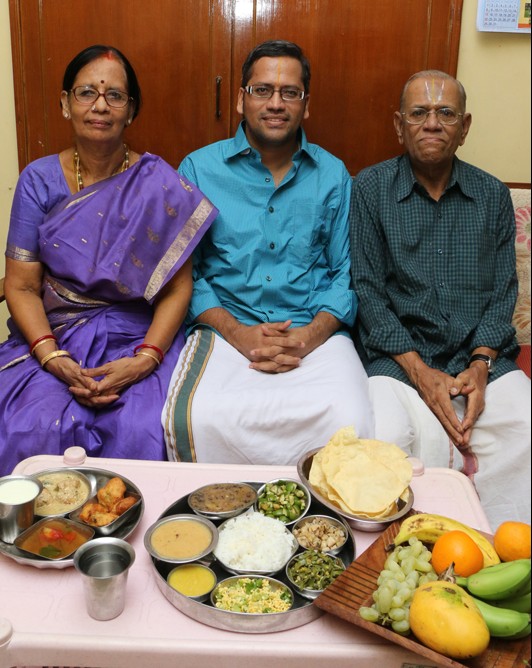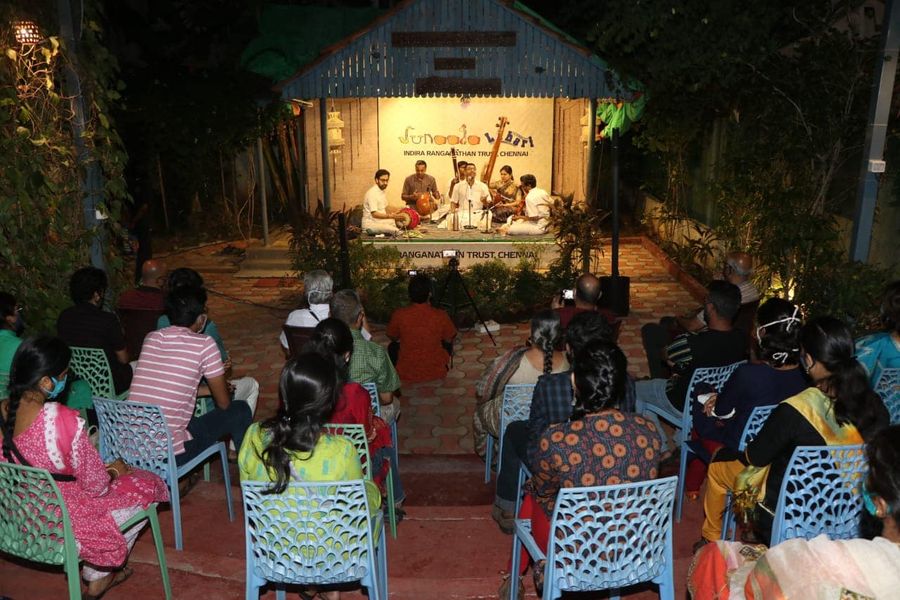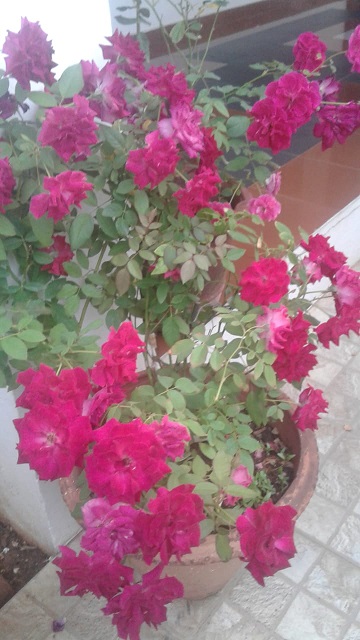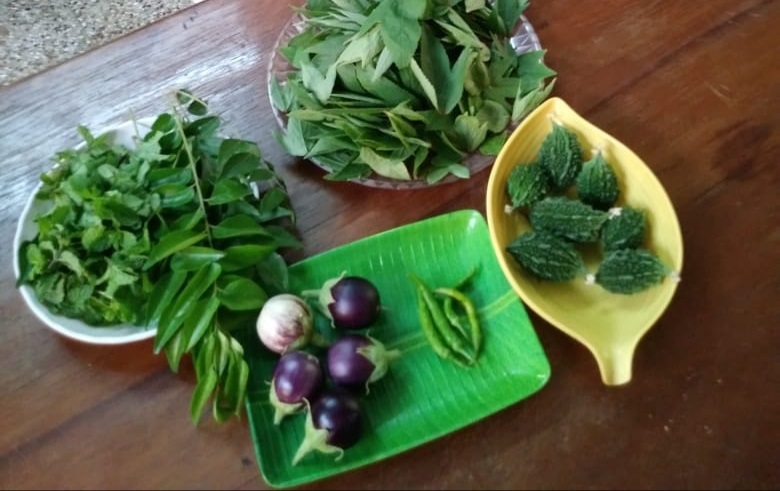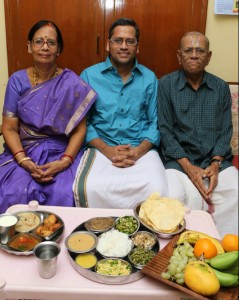 During the second week of April, Tamils and Malayalis get ready to usher in the new year by cooking up grand lunches for their friends and relatives and visiting the temples to get the blessings of their favourite diety. This year too was no different. Here is a look at how a few families in the Mylapore area welcomed the Manmadha year…
During the second week of April, Tamils and Malayalis get ready to usher in the new year by cooking up grand lunches for their friends and relatives and visiting the temples to get the blessings of their favourite diety. This year too was no different. Here is a look at how a few families in the Mylapore area welcomed the Manmadha year…
At Vatsala Ramagopal’s house, a Tamilian, it has been a tradition for decades to first make vepampoo (neem flower) pachadi. She says, “Certain items have to be offered as naivedyam today. One of them is vepampoo pachadi and the other is a mango pickle (maa vadu) made specially for new year. Other items on her menu include buttermilk kozhambu, plaintain curry, kosemali (made with green gram dhal and coconut), vada and a payasam made out of green gram dhal and jaggery”.
Vatsala, a resident of Mylapore for more than a decade, takes a lot of pains in getting the neem flower ready for the pachadi. she says, “A week before the festival, I gather all the flowers from the tree in our backyard and clean it. The cleaning process takes a couple of days as the process is a little tedious. I then lay it out to dry in the sun for about three days and then distribute it to my friends and relatives”.
In the evening, Vatsala and her family (in the picture), go to Tambras for the panchangam patanam (reading of the panchangam). She is a resident of Mandavelipakkam.
L. Hariharan’s wife, Vijayalakshmi, got up at 4 a.m. yesterday to celebrate new year. Special kolams are drawn outside and inside her house on this day. “Padi kolam with sem mannu is drawn outside the house and maa kolam with rice flour is drawn inside the house. We then hang a mango
leaf thoranam outside and decorate our puja room with flowers”, says Vijayalakshmi.
After this, Vijayalakshmi adorns a madisar and starts cooking. Specials on this day include vepampoo pachadi, curd pachadi with green pepper, plaintain curry, coconut poli, vada, carrot sambar and a payasam made with rice and jaggery. “Onion is not used for any of the items made on this day”, she adds. A visit to the Kapaleeshwarar temple marks the end of their celebration. The family stays at Adam Street, Mylapore.
For Lekshmi Manoj, a Malayali, the preparations start two days before Vishu. She says, “For us, it is very important to place a yellow flower called ‘Konnapoo’ in the vishu kani and we start looking for these trees (which grow on street corners) a couple of days before the festival.
After everybody goes to sleep the night before Vishu, I prepare the vishu kani which will have fruits and vegetables like cucumber, snake gourd, mango and coconut, some coins in a silver tumber and a gold chain on a mirror”.
Today, the entire family got up early to view the vishu kani. After that, the elders of the family give money to the children in a practice known as ‘vishu kaineetam’. After these rituals, Lekshmi starts preparing the food. This year, her elaborate vishu sadhya had delicacies like cucumber and curd kichidi, sweet pachadi, cabbage thoran, potato curry, mixed vegetable sambar, rasam and nendrapazham (a kind of banana) chips. She is a resident of Ranga Road, Mylapore
Temples in the Mylapore area too had a busy day yesterday. The Ayappan Temple at M. R. C. Nagar was beautifully decorated with fruits and vegetables. An annadanam (sambar and curd rice) was organised inside the temple premises. More than 200 people visited the temple on this day.
